I can’t think of (m)any activities that offer a better national park experience than an overnight hiking trip!
Heading deep into a park’s backcountry, setting up camp, exploring an unspoiled landscape, encountering wildlife,… Spending any number of nights backpacking in one of the national parks is something you’ll never forget.
Contents
- 11 Awesome National Parks for Backpacking Trips
- Best Multi-Day Hikes in USA National Parks
- 1. Appalachian Trail – Shenandoah National Park, Virginia
- 2. Wonderland Trail – Mount Rainier National Park, Washington
- 3. John Muir Trail – Yosemite, Sequoia & Kings Canyon National Parks, California
- 4. Grand Canyon Rim-to-Rim Hike – Grand Canyon National Park, Arizona
- 5. Painted Desert Backpacking Trip – Petrified Forest National Park, Arizona
- 6. Chisos Mountains – Big Bend National Park, Texas
- 7. The Wilderness Coast – Olympic National Park, Washington
- 8. Teton Crest Trail – Grand Teton National Park, Wyoming
- 9. Haleakala Crater Crossing – Haleakala National Park, Hawaii
- 10. Coastal Trail – Redwood National & State Parks, California
- 11. Cascade Pass to Stehekin – North Cascades National Park, Washington
- Wildlife Safety While Backpacking in the National Parks
- Other National Park Activities
11 Awesome National Parks for Backpacking Trips
Below, I’ve collected the best multi-day hikes in America’s national parks. From the ancient forested mountains of the East to the Southwestern deserts and canyons to the volcanoes and coasts of the Pacific Northwest, you’ll find epic long-distance trails in every corner of the country.
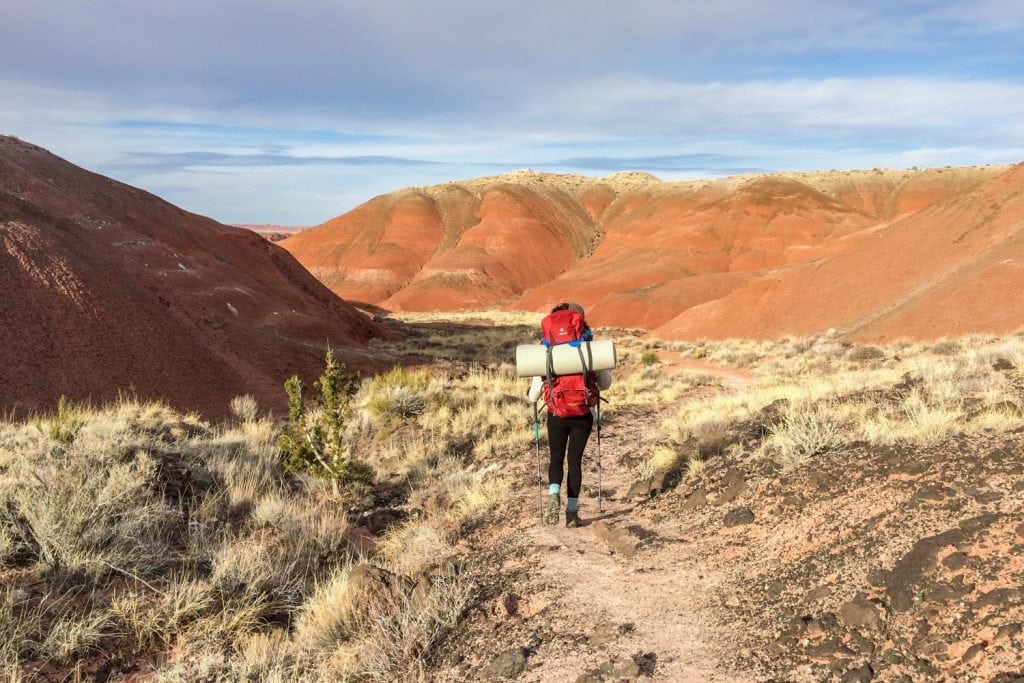
This best national parks for backpacking post contains affiliate links. You can read more about our Terms of Use / Disclosure here.
Best Multi-Day Hikes in USA National Parks
1. Appalachian Trail – Shenandoah National Park, Virginia
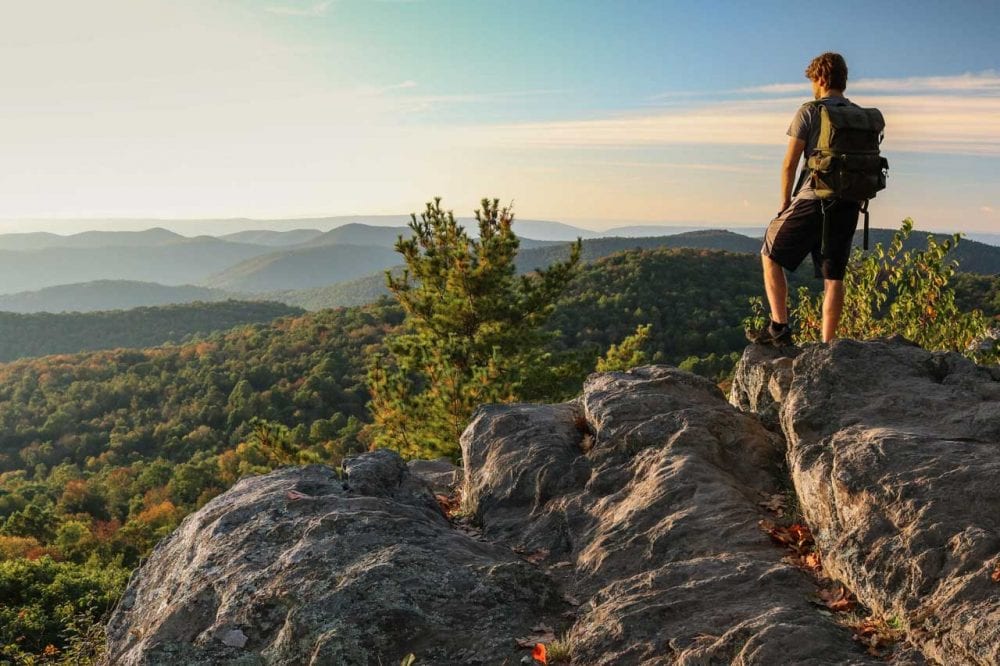
There are more than 500 miles of hiking trails in Shenandoah National Park, climbing up to granite summits or running down into the park’s characteristic woodland hollows. This includes 105 miles of the legendary Appalachian Trail.
Snaking its way for over 2,180 miles from Georgia to Maine, the Appalachian Trail—or AT—runs along the entire length of Shenandoah National Park, the only national park in Virginia.
It follows Skyline Drive, occasionally crossing this scenic mountain road and continuing on the other side.
The Appalachian Trail enters Shenandoah at the Rockfish Gap Entrance Station in the south, leaving the park in its far northern section. The trail runs across the crest of the Blue Ridge Mountains, summiting several peaks and offering spectacular views on the way.
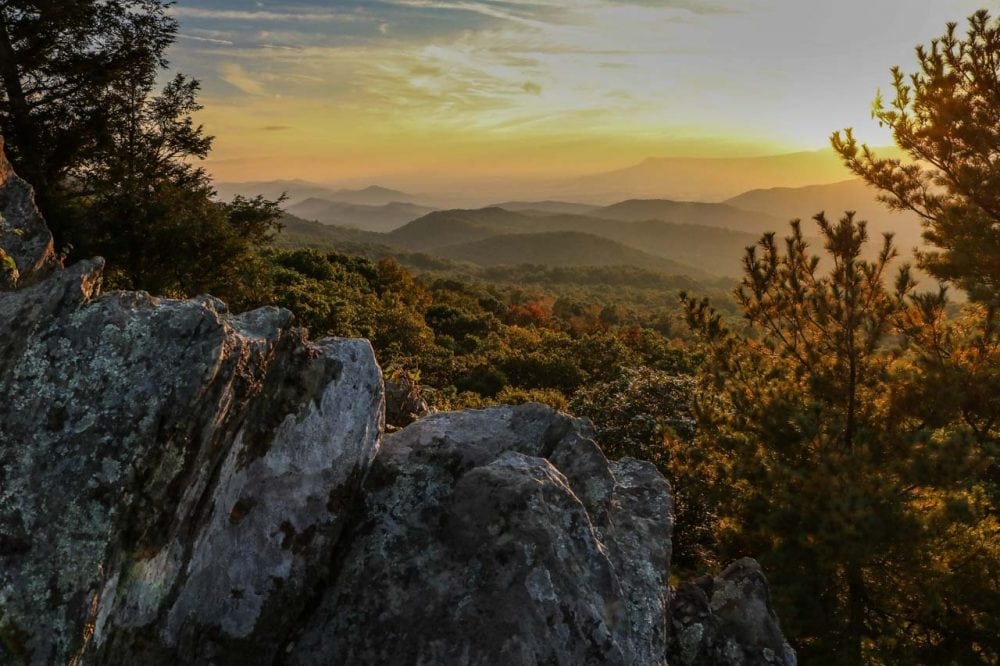
Backcountry camping is allowed in Shenandoah National Park, but there are also four developed campgrounds, two historic lodges and several cabins available.
Additionally, the Potomac Appalachian Trail Club operates six primitive cabins on or near the Appalachian Trail in Shenandoah National Park.
More Information
- Distance: 105 miles
- Duration: 7 days
- Best time to hike: April through May and July through October; June is the busy “thru hiker season”
- Learn more: Appalachian Trail Conservancy
2. Wonderland Trail – Mount Rainier National Park, Washington
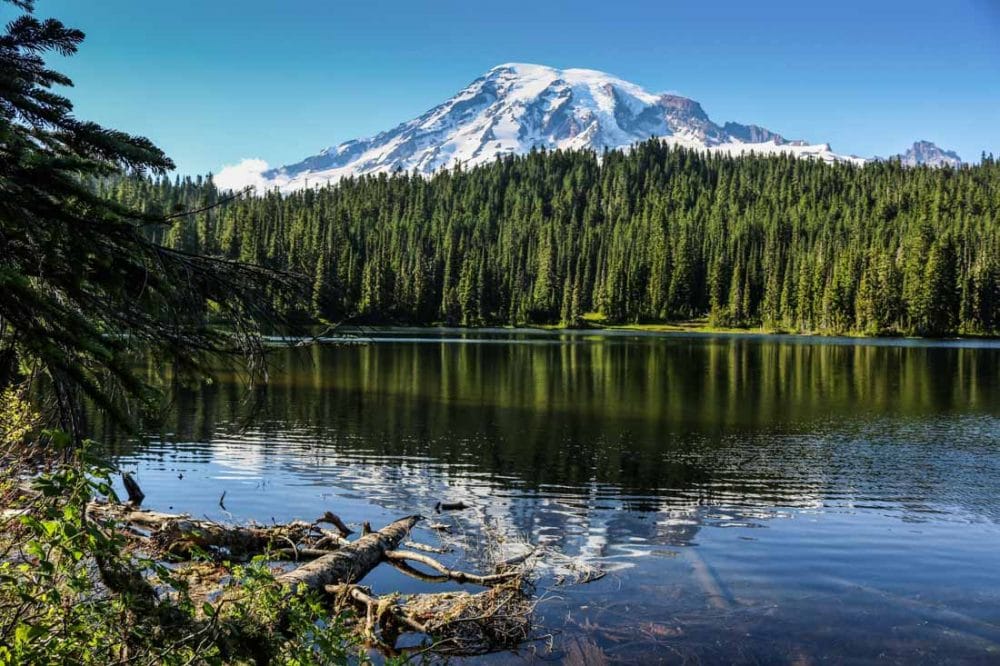
One of the best backpacking loops in the Pacific Northwest, the Wonderland Trail circumambulates mighty Mount Rainier.
It’s 93 miles long with a cumulative elevation gain of about 23,000 feet. The trail passes through several major life zones in Mount Rainier National Park, dipping into forests and descending into valleys, climbing slopes and cresting ridges.
This is one of the best multi-day hikes in America’s national parks, mainly because of its variety and difficulty, but also because it offers glorious views of “Tacoma”, one of the Native American names for Mount Rainier.
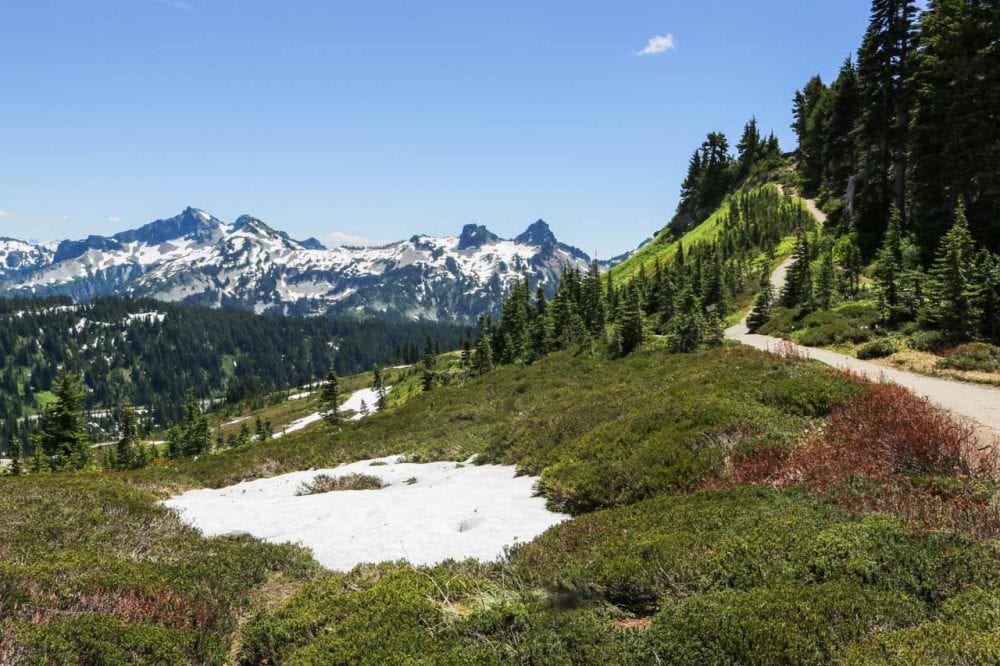
Most people complete their Wonderland Trail hike in 10 days, but the National Park Service allows 14 days to complete it.
On the way, there are numerous campgrounds, including three developed campgrounds and no fewer than eighteen backcountry wilderness camps.
Note that you’ll need to get a wilderness permit for all overnight trips in the wilderness of Mount Rainier National Park.
More Information
- Distance: 93 miles
- Duration: 10-14 days
- Best time to hike: Late-July to mid-September
- Learn more: The Wonderland Trail
3. John Muir Trail – Yosemite, Sequoia & Kings Canyon National Parks, California
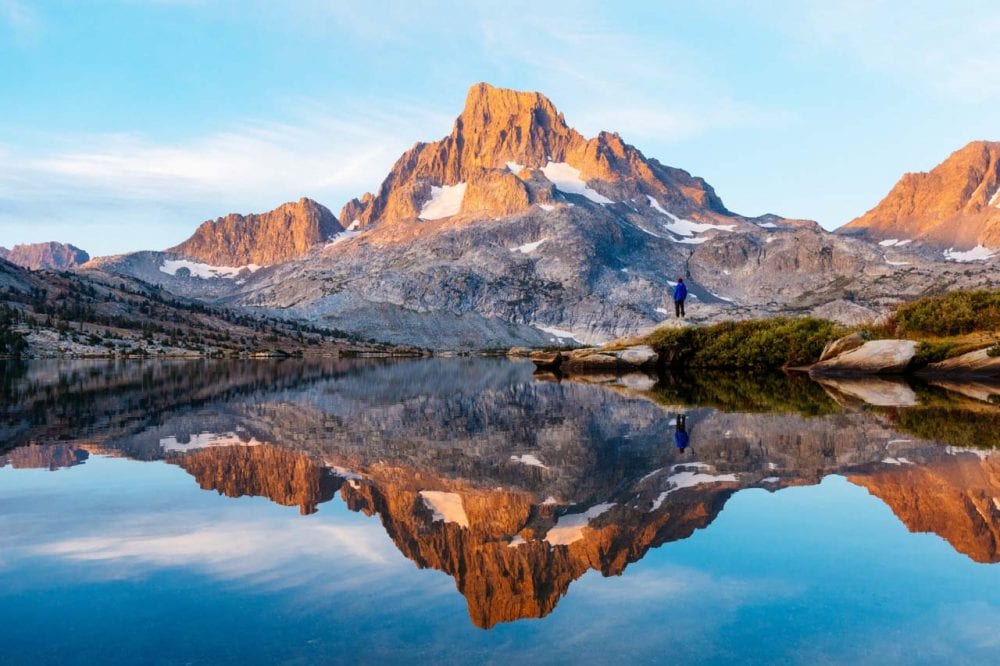
If you’re looking for the best overnight backpacking trails in the national parks, I don’t think there’s a better one than the epic John Muir Trail.
The simple reason for this is that it runs through no fewer than three California national parks, overlaps with the Pacific Crest Trail and features some of the greatest mountain scenery in the country.
And if that’s not enough, this is also the place that enjoys the sunniest and mildest climate of any major mountain range on Earth.
The John Muir Trail starts in the heart of one of the grandest U.S. national parks—the Yosemite Valley. It then runs through the Ansel Adams Wilderness and Sequoia National Park before ending at the summit of Mount Whitney in Kings Canyon National Park, the highest mountain in the continental United States (14,505 feet).
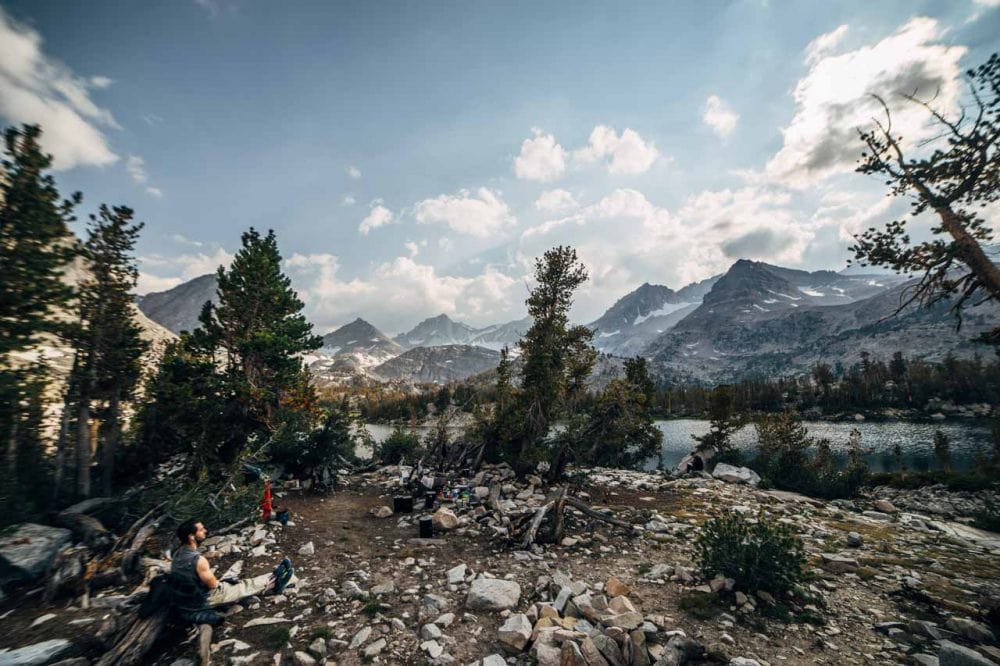
Most of its course is in designated Sierra Nevada Mountains wilderness. On this sensational multi-day hike through three national parks, you’ll wander across alpine meadows, along shimmering lakes, past sheer granite cliffs and underneath towering peaks.
It’s truly a once-in-a-lifetime national parks experience, one of the absolute best backpacking trails in America.
More Information
- Distance: 211 miles
- Duration: 3 weeks
- Best time to hike: early-July through September
- Learn More: Pacific Crest Trail Association
4. Grand Canyon Rim-to-Rim Hike – Grand Canyon National Park, Arizona
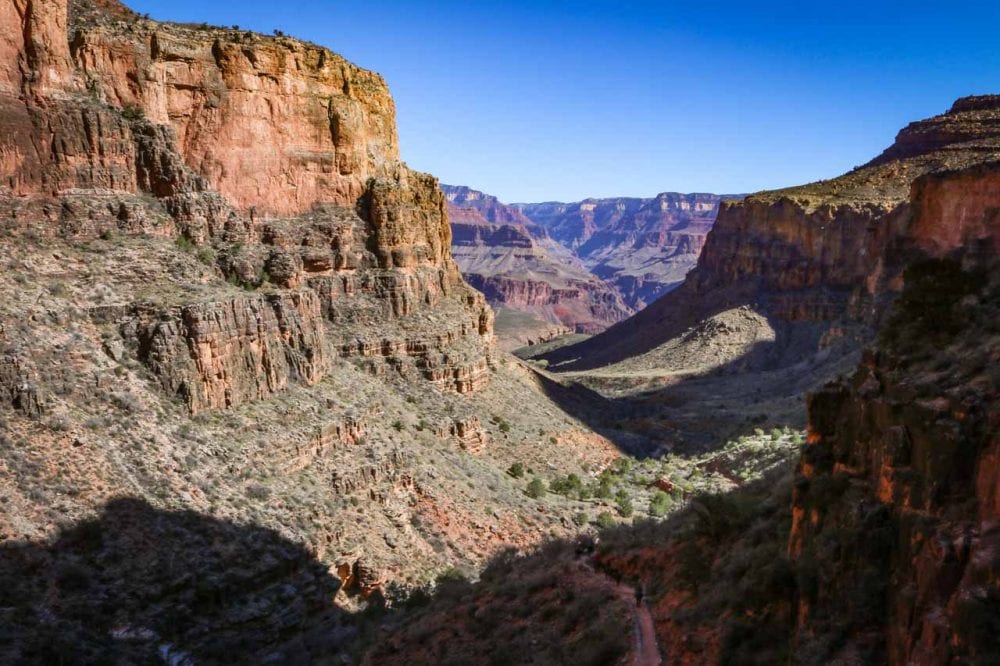
For an epic adventure in a desert wilderness, there are few—if any—better backpacking trips in America than a Grand Canyon crossing. Hiking the Grand Canyon from rim to rim means descending all the way to the bottom of one of the world’s largest canyons and climbing back out.
It’s a multi-day national park hike that’ll test your mental strength, push you to your physical limits, and engrave amazing moments in your memory.
This is, however, not simply a “walk in the park.” In fact, a rim-to-rim hike in Grand Canyon National Park can have disastrous consequences for people who are unprepared or misjudge their fitness levels.
That said, if you’ve trained, done your research and have the proper hiking gear, you’re in for the adventure of a lifetime. This is without question one of the best backpacking trips in national parks in the U.S.
Basically, you have two options to hike from the North Rim down to the Colorado River and up to the South Rim. (This north-south route is recommended because the way up is significantly shorter—the North Rim is over 1,000 feet higher than the South Rim.)
- North Kaibab Trail to River Trail to Bright Angel Trail
- North Kaibab Trail to South Kaibab Trail
I’d suggest the first option, the North Kaibab Trail down and Bright Angel Trail up, simply because, even though it’s a little longer, it brings you straight into Grand Canyon Village.
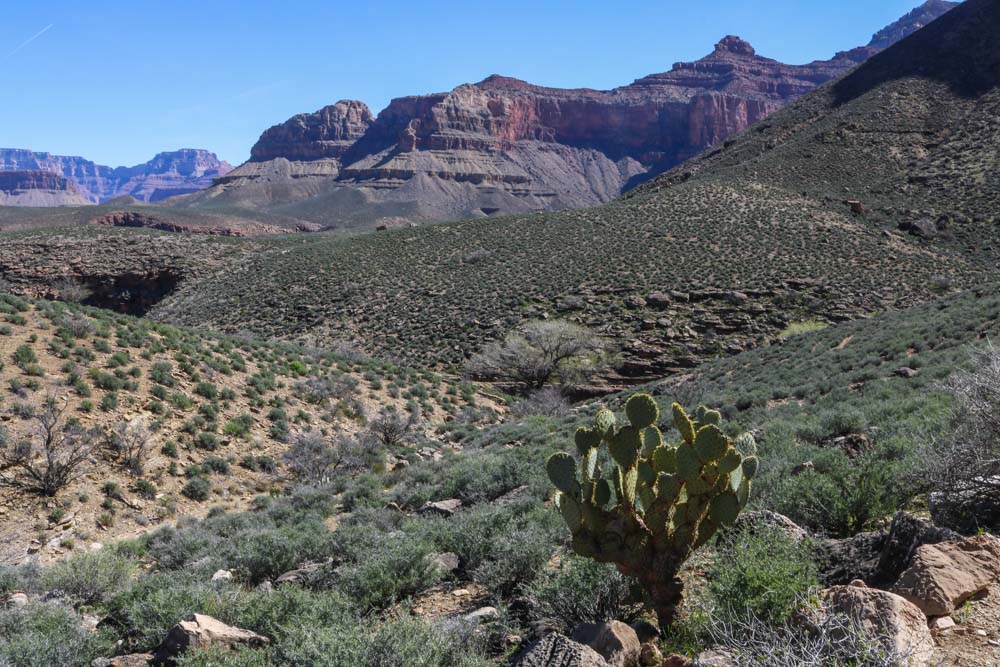
Since this is a point-to-point hike, you’ll either need to have two cars or use a transportation service. In case you only have one car, a great solution is taking the Trans-Canyon Shuttle, which commutes between the North and South Rims. One-way tickets cost $90.
During this hike, you’ll walk through every life zone between Mexico and Canada. The Grand Canyon is home to five of the seven life zones on Earth and three of North America’s four types of desert.
On the way, you’ll also pass three of the four areas of geological time. This is, quite literally, a journey through time and space.
The National Park Service recommends taking your time for this challenging hike—it’s 5,740 feet down and 4,340 feet up. Most hikers complete the 24-mile crossing of the Grand Canyon from rim to rim in four days and three nights.
There are three campgrounds on the way—Cottonwood, Bright Angel and Indian Garden—while the very popular Phantom Ranch offers more “luxurious” accommodation near the Colorado River.
More Information
- Distance: 24 miles
- Duration: 4 days
- Best time to hike: April-May and September-October
- Learn more: Grand Canyon Backcountry Trails
5. Painted Desert Backpacking Trip – Petrified Forest National Park, Arizona
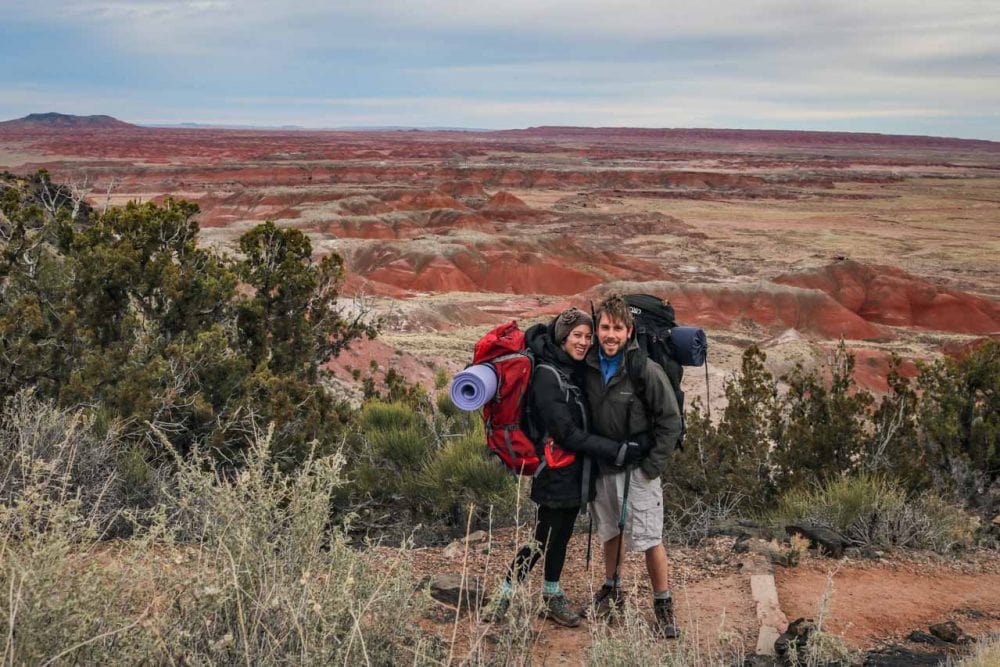
For a short backpacking trip in one of the national parks, Arizona’s Petrified Forest National Park is a great option. It’s really accessible—the only national park with a section of Route 66—and doesn’t require a whole lot of preparation.
There’s plenty to see and do in Petrified Forest, from admiring colorful petrified wood to walking through amazing mesas and visiting historic sites. In the park’s northern area, you’ll find the spectacular Painted Desert.
A wild desert filled with multicolored badlands, the Painted Desert is one of the greatest wild camping areas in the national parks. The park’s only road, which runs along the plateau above the Painted Desert, offers panoramic views.
From Kachina Point, near the Painted Desert Inn, one of my favorite national park buildings, the Painted Desert Wilderness Access Trail snakes down into the badlands below.
Once you’re at the bottom, less than a mile from the rim, the trail suddenly disappears and you’re free to wander around as you please.
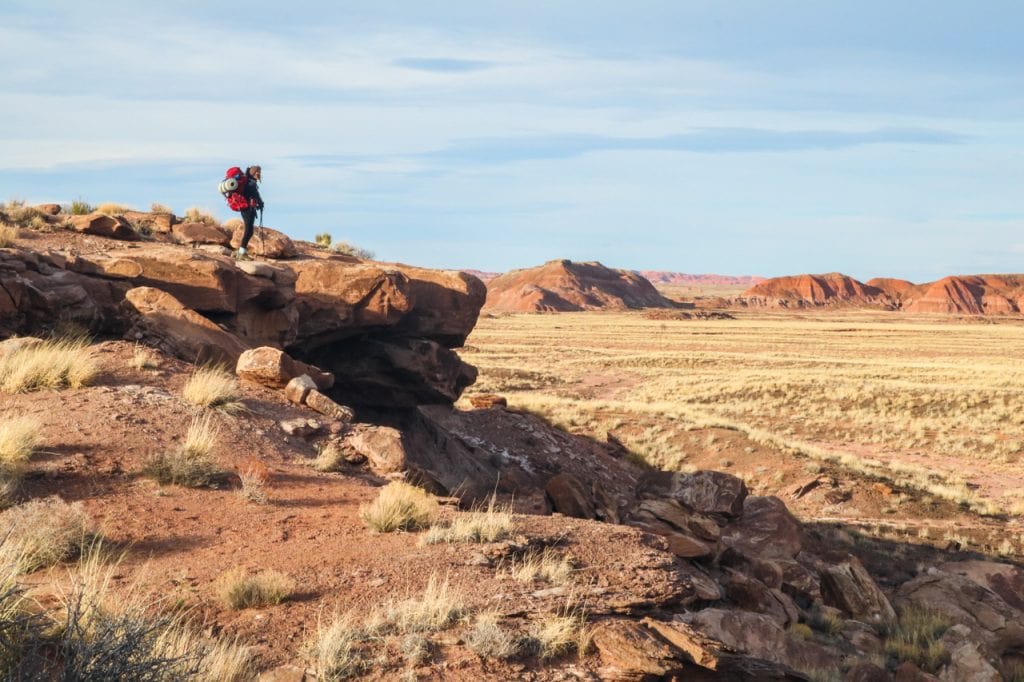
You can literally go and camp wherever you want in the designated National Wilderness Area.
The only requirements are that you camp at least a mile from the trailhead, don’t leave any waste behind and don’t take anything that doesn’t belong to you. Charcoal or wood fires aren’t allowed either. Besides that, you basically have unlimited backpacking freedom.
Backpacking in the Painted Desert, one of my favorite national park camping experiences, can be an easy overnight trip or a multi-day adventure deep into the desert wilderness. It’s phenomenal, especially because the star-peppered night sky is breathtaking.
More Information
- Distance: At least 2 miles
- Duration: 2-5 days
- Best time to hike: March-May and September-October
- Learn more: Painted Desert Camping Guide
6. Chisos Mountains – Big Bend National Park, Texas
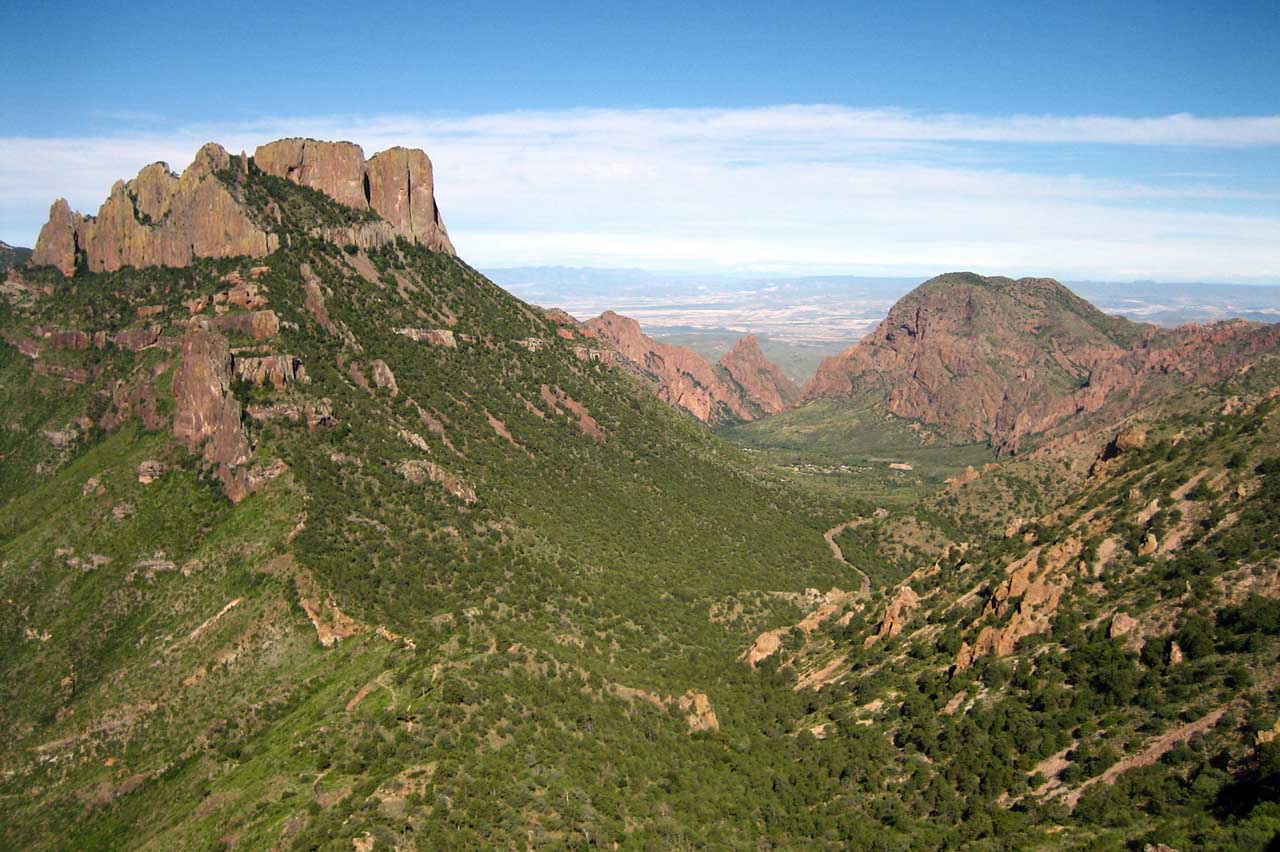
The Chisos Mountains, with 7,825-foot Emory Peak as their pinnacle, are the only mountain range in America located entirely within one national park.
A remote area in southwestern Texas, it’s a true backpacker’s paradise. Prepared and experienced hikers will find hundreds of miles of trails to explore here. Much of it is desert hiking, though, with complex topography and occasionally unclear trails.
This means you’ll need a topographic map and compass—and the skills to use them. Other Big Bend National Park backpacking essentials include proper hiking boots, plenty of food and water, a hat and sunscreen, and a good backpacking tent.
There’s no distinct route that’s “better” than any other in the Chisos Mountains. Simply put, wherever you go, it’ll be amazing.
The numerous Big Bend National Park hiking trails in the Chisos Mountains allow you to piece together relatively short loops, while also offering you to opportunity to create an epic long-distance desert adventure.
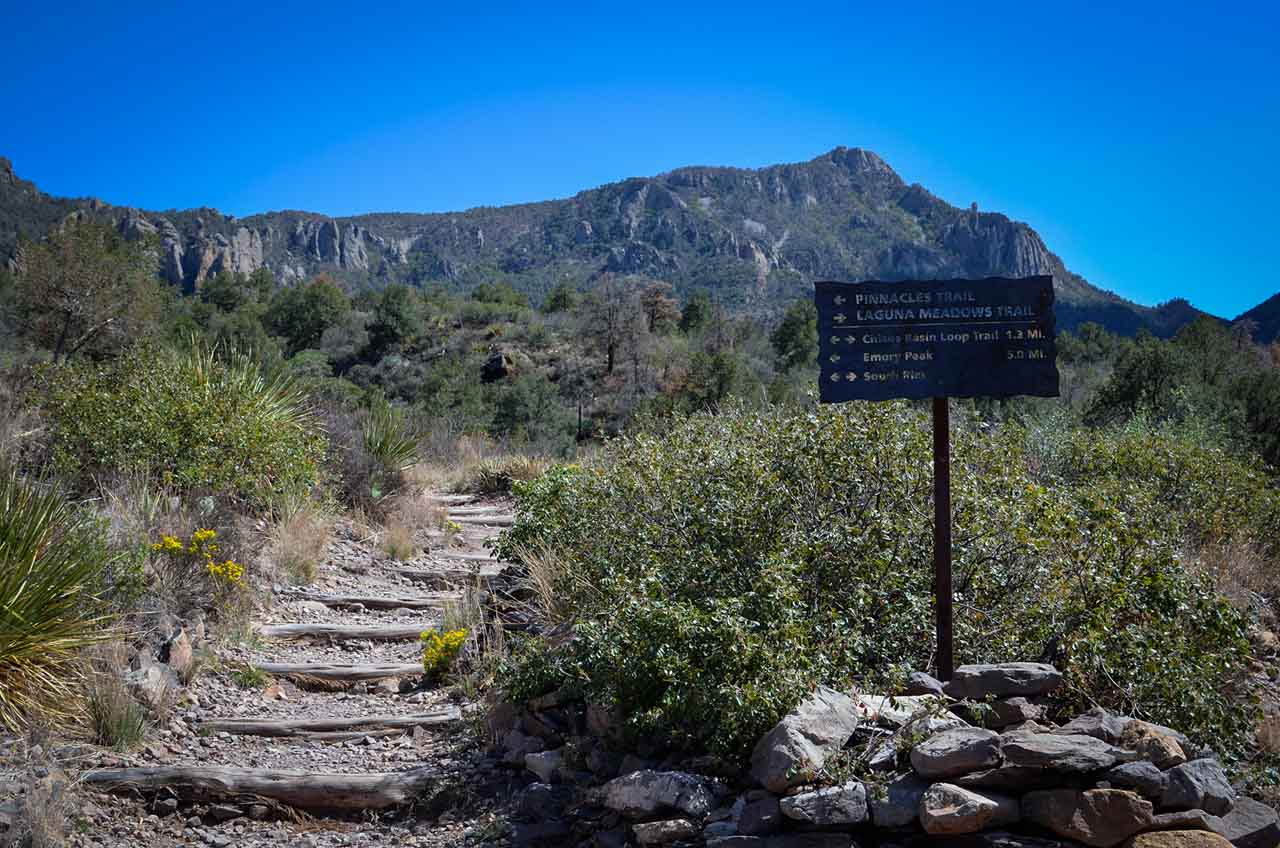
This map shows all the backpacking trails in the Chisos Mountains, as well as the 42 backcountry campsites, which are divided into 14 camping areas. You’ll need a backcountry permit for overnight hiking in Big Bend National Park, as well as a detailed itinerary description.
Additionally, black bear and mountain lion encounters aren’t unusual in these wild mountains. So, it’s very important to know what to do when you see one. (See below for more information about wildlife safety while backpacking in national parks.)
More Information
- Distance: Everything from 5 miles to 20+ miles
- Duration: 2 days to a maximum of 14 consecutive nights
- Best time to hike: Late-spring and early-fall
- Learn more: Backpacking in Big Bend
7. The Wilderness Coast – Olympic National Park, Washington
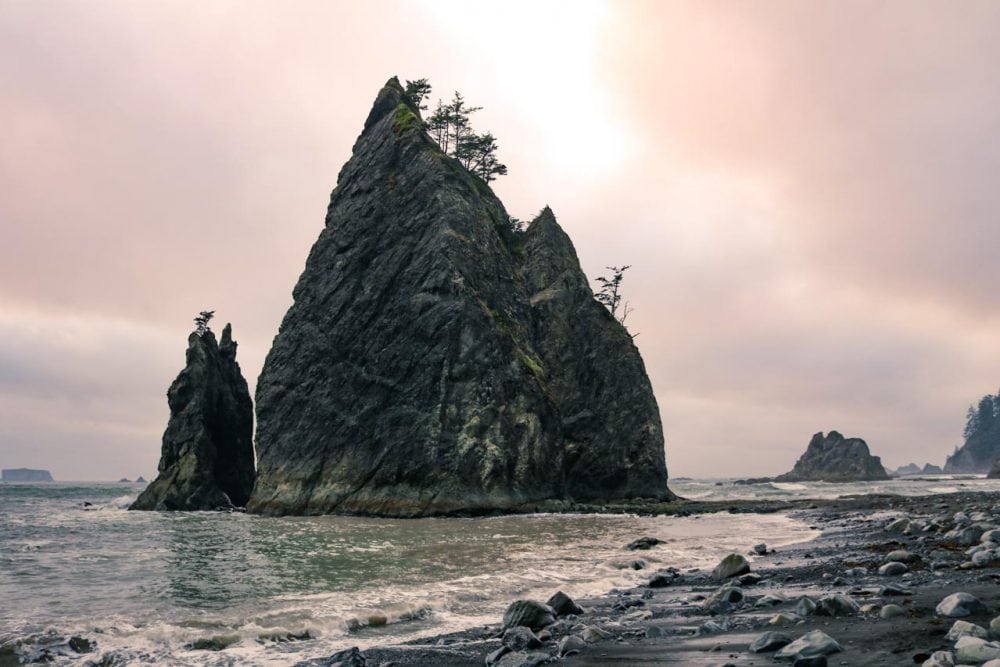
UNESCO World Heritage-listed Olympic National Park protects more than 73 miles of the wildest and most pristine natural coastline in the lower 38 states.
It’s a magnificent coastal wilderness with only a few road access points, a place characterized by crashing waves, sea stacks, dramatic cliffs, dense forests and abundant wildlife. The Wilderness Coast offers some of the best multi-day hikes in national parks.
There are several short and long hiking routes along the coast of Olympic National Park, divided into the North Olympic Coast and South Olympic Coast trails.
For a quick taste of this coastal wilderness, you can go for a 1-mile one-way overnight hike to Hole-in-the-Wall on Rialto Beach. On the opposite side of the Olympic backpacking spectrum lies the epic 35-mile multi-day hike from Shi Shi Beach to Rialto Beach.
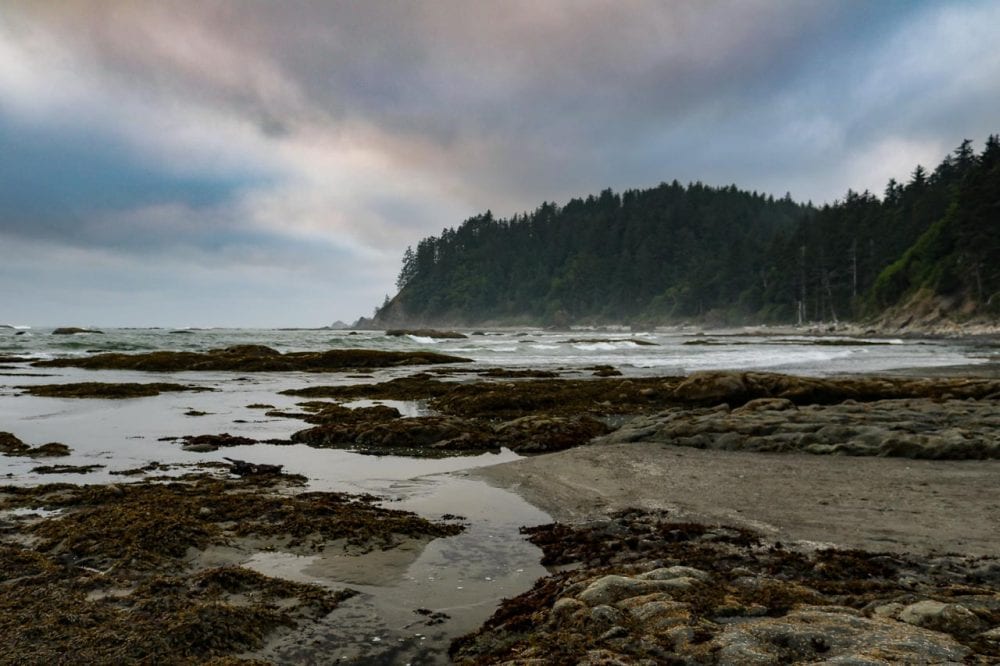
Backpacking the Olympic National Park coast involves quite a lot of beach hiking. This means that it’ll take a lot longer to cover certain distances than what you might be used to. Keep this in mind when planning your trip.
It’s also important to be aware of and keep an eye on the tides. Since this coastal adventure will take you past several headlands and cliffs, it’s possible to get cut off by the high tide.
Unlike the other long-distance hikes in national parks featured in this post, your Wilderness Coast packing list must include a tide chart and a watch. (Phones can die, so a watch is absolutely essential.)
While a multi-day backpacking trip along the Olympic National Park coast requires preparation, permits, awareness and skills, it’s a phenomenal experience.
You’ll get to explore one of America’s most rugged coastlines, which comes with world-class wildlife viewing opportunities. Black bears, elk, whales, sea otters, bald eagles and countless tide pool creatures all call this coast home.
More Information
- Distance: From 1 mile to 35+ miles
- Duration: 2-7 days
- Best time to hike: April through October
- Learn more: Hiking the Wilderness Coast
8. Teton Crest Trail – Grand Teton National Park, Wyoming
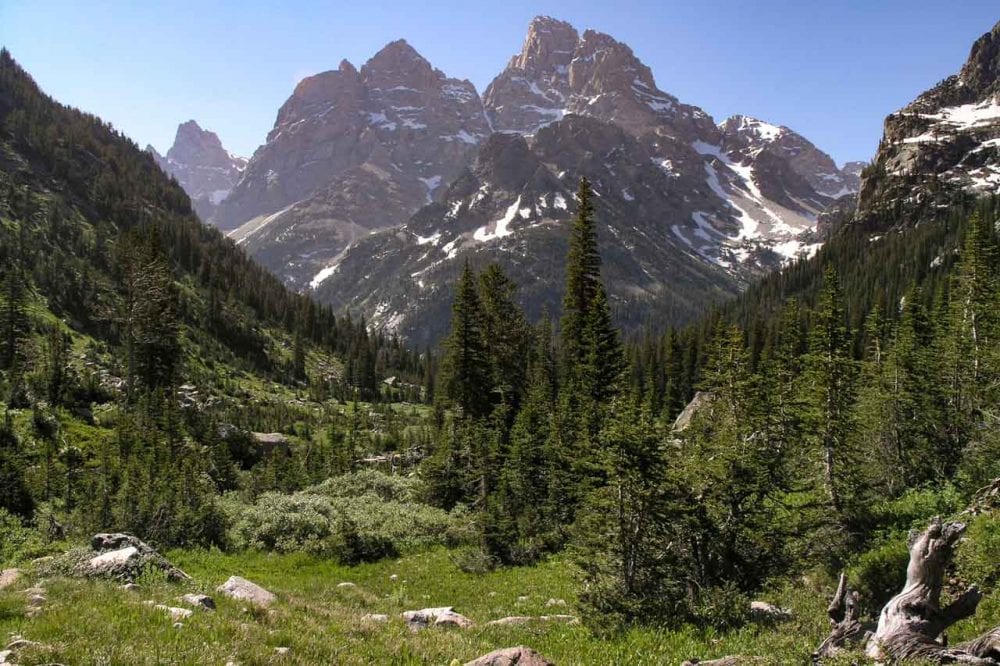
One of the best national parks for backpacking among wildlife, Grand Teton National Park is home to iconic American megafauna, from grizzly bears, mountain lions and wolves to elk, American bison and moose. It’s one of my top national parks to see wild animals.
Grand Teton is also home to one of America’s greatest long-distance national park trails. The Teton Crest Trail runs through the park’s high country, from lake to lake, across ridges, mountain passes and mountain meadows.
A combination of several short trails in Grand Teton National Park, the Teton Crest Trail’s distance varies depending on which trails you link together. Typically, this spectacular multi-day trek is between 35 and 45 miles long.
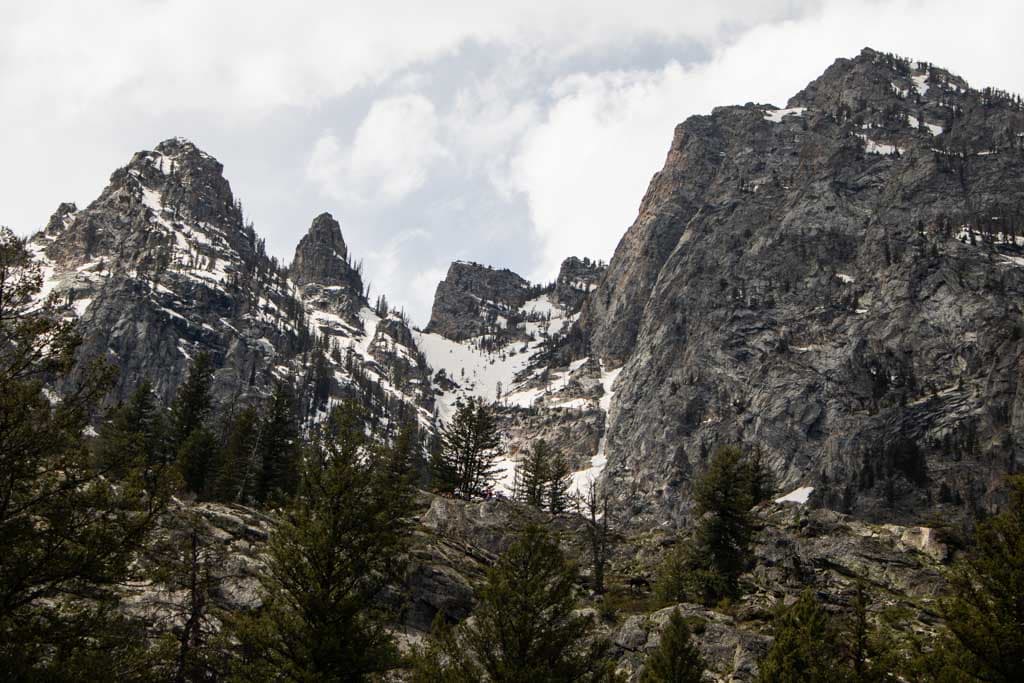
A popular starting point is the Granite Canyon Trailhead near the park’s southern boundary. The trail then climbs through Granite Canyon to the Death Canyon Shelf, continuing across the Grand Teton high country to either Cascade Canyon or the Paintbrush Divide.
The long version of the Teton Crest Trail (down Paintbrush Canyon) ends at the Leigh Lake Trailhead, while a shorter route (down Cascade Canyon) terminates at the Jenny Lake Trailhead.
For an overview of the Grand Teton National Park trail options for a multi-day Teton Crest hike, check out the park’s backcountry trip planner.
Obviously, this is bear country—both grizzlies and black bears abound here—and it’s mandatory to carry bear cannisters on backpacking trips in Grand Teton. Always carry bear spray, too, and know how to use it!
More information
- Distance: 35 to 45 miles
- Duration: 3-5 days
- Best time to hike: June through September
- More information: Grand Teton Backcountry Camping
9. Haleakala Crater Crossing – Haleakala National Park, Hawaii
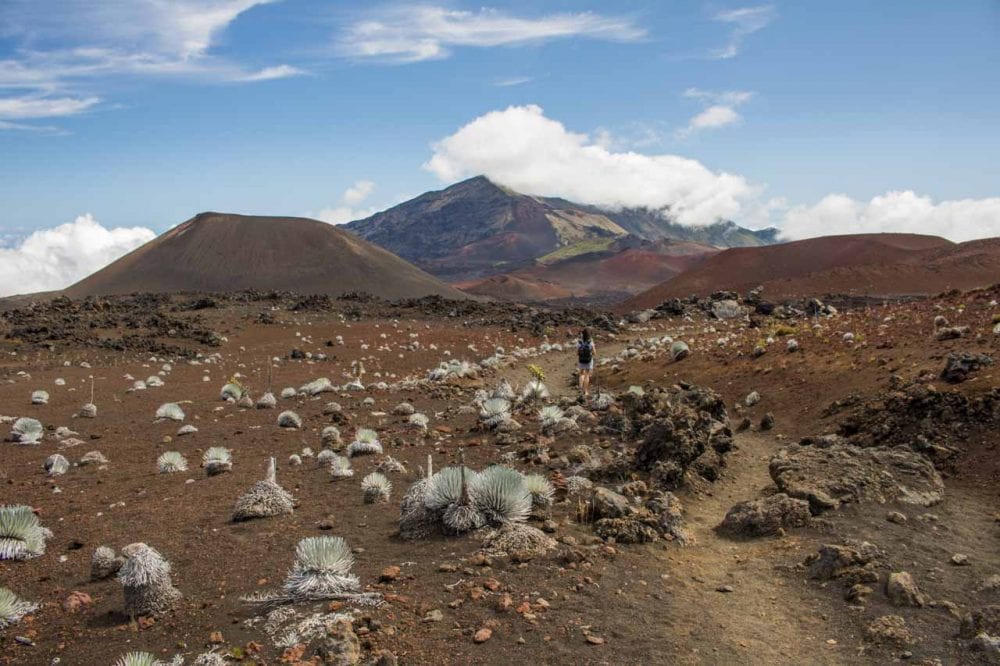
Rising more than 10,000 feet above the Pacific Ocean, the Haleakala Volcano dominates eastern Maui, Hawaii. This majestic mountain is home to some of the world’s most remarkable landscapes, animals and plants.
It also offers one of the greatest backpacking experiences in the United States.
The Haleakala Crater—technically a valley—is in Haleakala National Park’s Summit Area, a place home to numerous cinder cones and an aeolian cinder desert.
There are some amazing day hikes in this area, as well as a little shrubland campground. Backpackers, too, can explore and wander to their heart’s content.
Two trails lead deep down into the Haleakala Crater: the Halemau’u Trail and the Keonehe’ehe’e Trail (also known as the Sliding Sands Trail).
The shortest route across the Haleakala Crater is the Sliding Sands Trail. Starting at the Haleakala Visitor Center near the summit, it runs to the Kapalaoa Cabin (5.6 miles from the trailhead) and continues to the Palikū Cabin and Campground at the far end of the crater (another 3.3 miles).
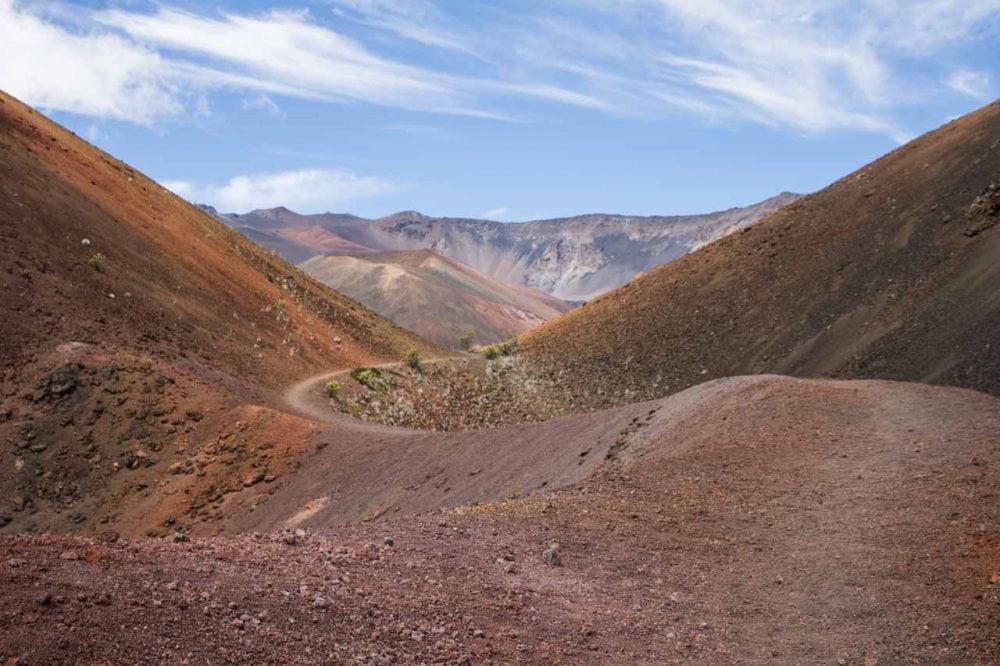
After spending a night or two at the Palikū Campground, you can retrace your steps the way you came. I do recommend, however, taking a detour along Pele’s Paint Pot, one of Haleakala’s most scenic areas. That detour will add about one extra mile to your return trip.
Note that wilderness camping in Haleakala National Park require a permit. These permits are free, issued on a first-come first-served basis, and require a photo ID and 10-minute orientation.
Additionally, I have to point out that, although you may be in Hawaii, this is desert hiking at its finest. Water is extremely scarce or unavailable altogether, while shade is almost non-existent.
Bring plenty of water, wear a hat and slop on sunscreen. You’ll need it all.
More Information
- Distance: At least 18 miles
- Duration: 2-3 days
- Best time to hike: All year
- More information: Wilderness Camping in Haleakala
10. Coastal Trail – Redwood National & State Parks, California
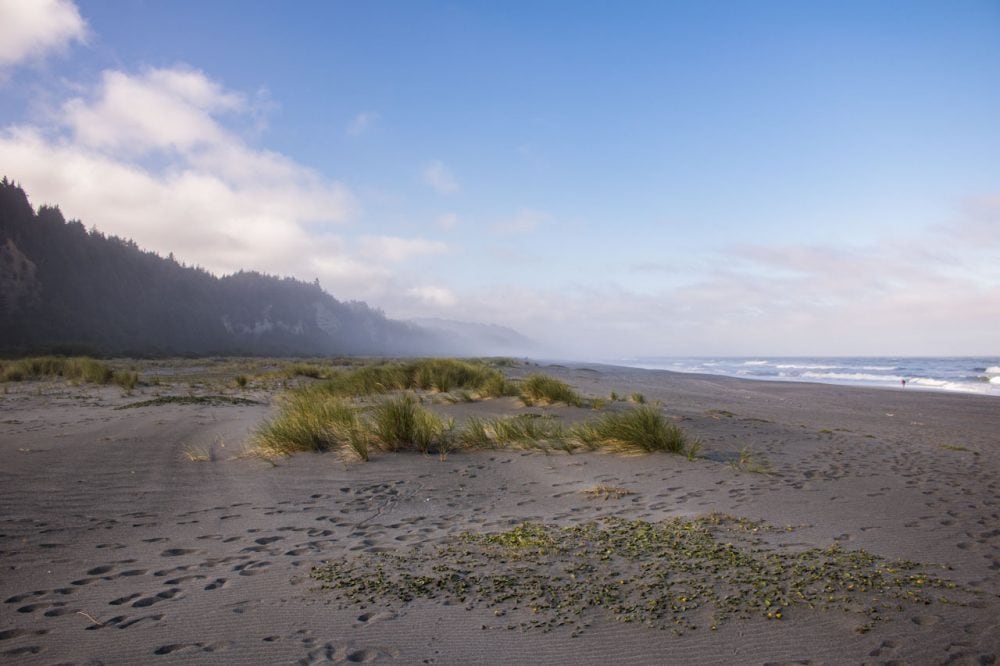
Although the Redwood National and State Parks are best known for their towering redwoods, you can experience an entirely different side of the park complex on the Coastal Trail.
Running from Crescent Beach to Elk Meadow, this fantastic 70-mile Redwood trail parallels the rugged Pacific coast of Northern California.
Along the way, hikers can explore tidepools, walk alongside redwood-topped cliffs and across sandy beaches. Wildlife abounds here, from sea gulls, starfish, crabs and sea lions to Roosevelt elk and the occasional black bear.
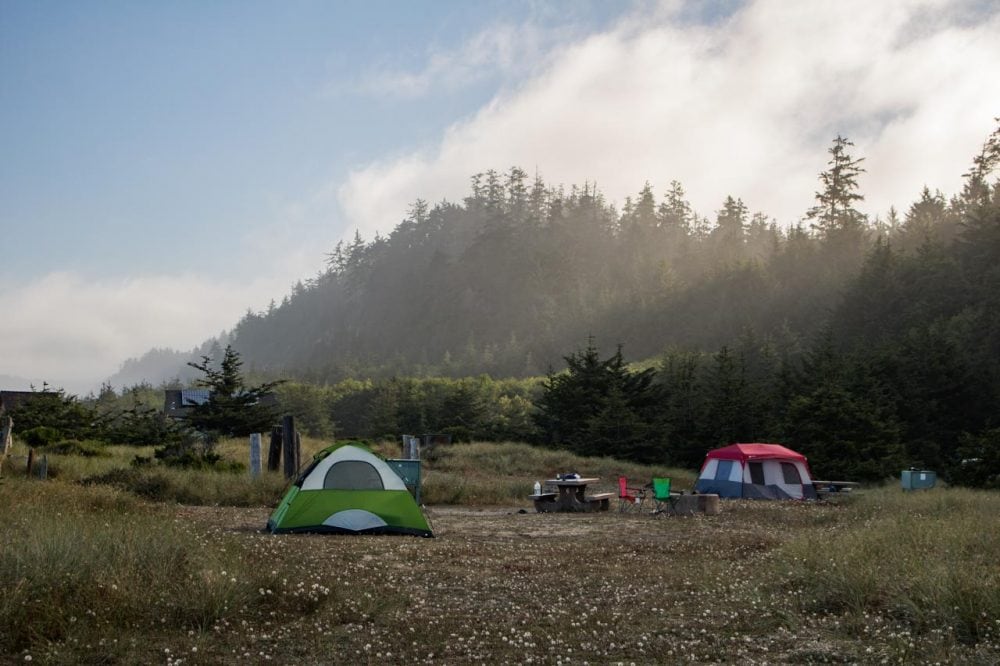
There are five backcountry campgrounds along the trail, located conveniently within a day’s walk from one another.
The trail also passes by the extraordinary Fern Canyon and Gold Bluffs Beach and Campground, two of my favorite areas in the entire Redwood National and State Parks complex.
More Information
- Distance: 70 miles for the whole thing; shorter sections possible, too.
- Duration: 6-7 days
- Best time to hike: Summer
- More information: Coastal Trail Sections
11. Cascade Pass to Stehekin – North Cascades National Park, Washington
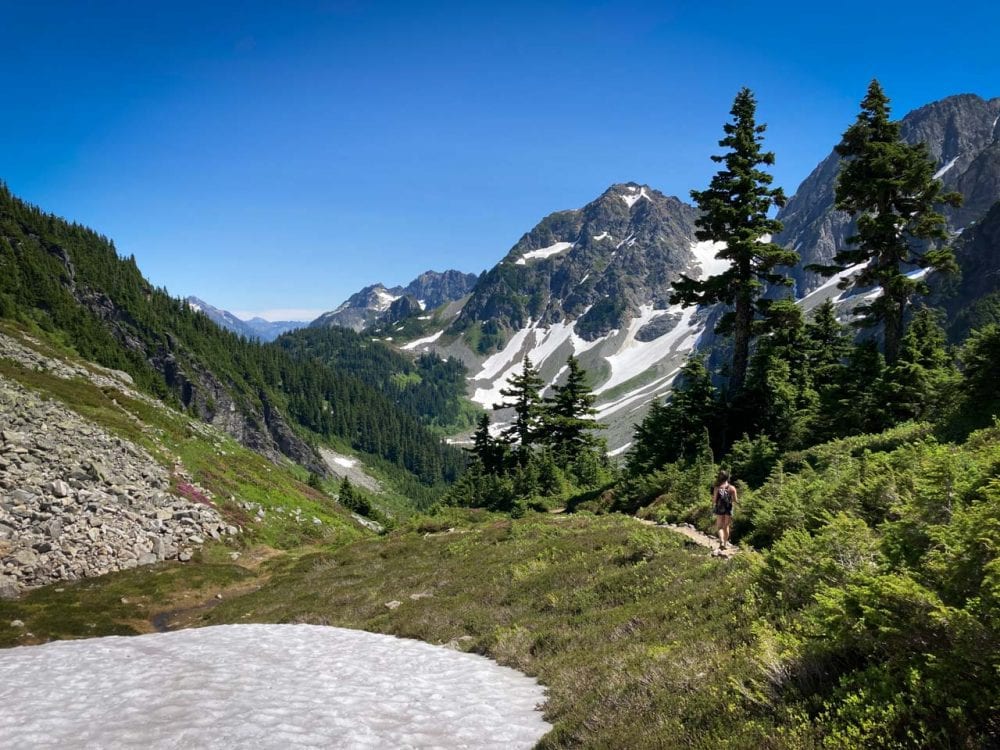
With no less than 93% of its area designated as wilderness, the North Cascades National Park Service Complex is the ultimate backpacking paradise. There’s only one road in North Cascades National Park—and it’s barely 6 miles long and unpaved.
At the end of that road, however, is the starting point of one of the best backpacking trips in America’s national parks. The Cascade Pass Trail takes hikers to the alpine meadows, glaciers and epic views of the North Cascades.
At 3.7 miles one way, this is the most popular day hike in North Cascades National Park. (It’s the only car-accessible trailhead in the national park, too.)
From Cascade Pass, you can take a side trip on the Sahale Arm Trail to the base of the massive Sahale Glacier. Beyond Cascade Pass beckons a pristine mountain wilderness dotted by a handful of backcountry campsites.
This is also a wildlife haven, a landscape inhabited by pikas, marmots, mountain goats, deer and black bears. A few grizzlies are thought to live in these mountains, too, but confirmed sightings, let alone encounters, are extremely rare.
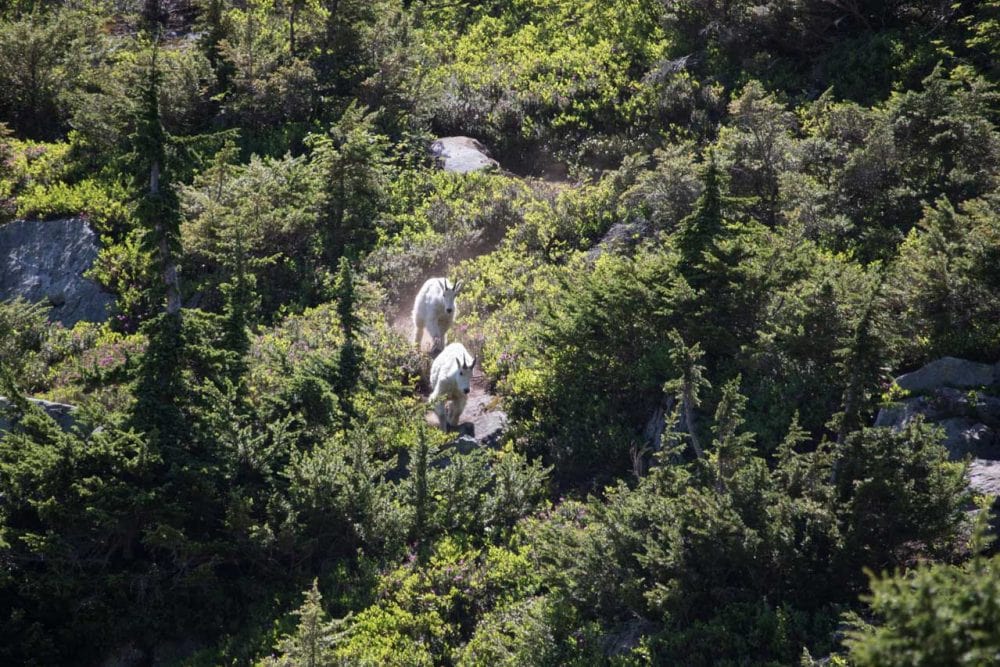
From the pass, the Cascade Pass Trail winds its way eastward and downward to Stehekin, a remote lakeside community that’s accessibly only on foot or by boat. At High Bridge, you can hop on the shuttle bus to Stehekin village.
Doing the Cascade Pass to Stehekin hike as a one-way thru hike requires some serious logistical planning, though. You’ll need both a car shuttle between two quite remote spots, as well as a pre-booked ferry ticket from Stehekin to the town of Chelan across Lake Chelan.
Alternatively, you could also hang out in Stehekin for a day or two before hiking back across Cascade Pass to the trailhead parking lot.
More Information
- Distance: 23 miles one way
- Duration: 3-4 days
- Best time to hike: July through September
- More information: Cascade Pass Trail Description
Wildlife Safety While Backpacking in the National Parks
Going on multi-day hiking trips in America’s national parks almost always means hiking in places where wildlife is present. This wildlife includes shy and usually docile creatures such as marmots, deer and birds, but also larger and potentially dangerous animals.
Backpacking in wildlife country requires some preparation, to keep both you and the animals safe.
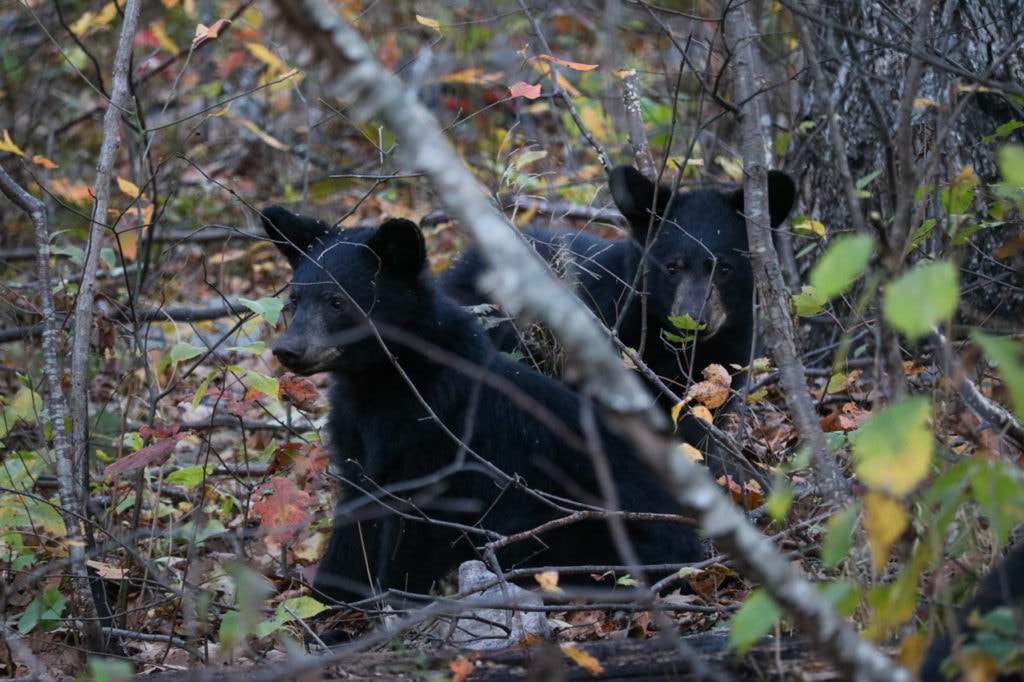
Especially bears are on the radars of most national park backpackers, but there are also several other animals you may have to look out for. Those include mountain lions (also known as cougars or pumas), rattlesnakes, elk, moose, mountain goats and bison.
I’ve written wildlife safety guides about the animals you’re most likely to run into when backpacking in national parks. Encounters with these animals could turn nasty if you don’t know what to do or how to behave.
Therefore, if you’re going on a multi-day hike in a park where any of these animals are present, it’d be a good idea to read through the following wildlife safety guides:
- Black bear safety guide
- Grizzly bear safety guide
- Mountain lion safety guide
- Elk safety guide
- Bison safety guide
- Rattlesnake safety guide
In any case, it’s smart to always bring bear spray on hikes in national parks that are home to bears. You can learn how to correctly use bear spray here.
This potent type of pepper spray works on basically all animals that have a nose, eyes and lungs. This includes black and grizzly bears (obviously), but also mountain lions, wolves and even moose and elk.
